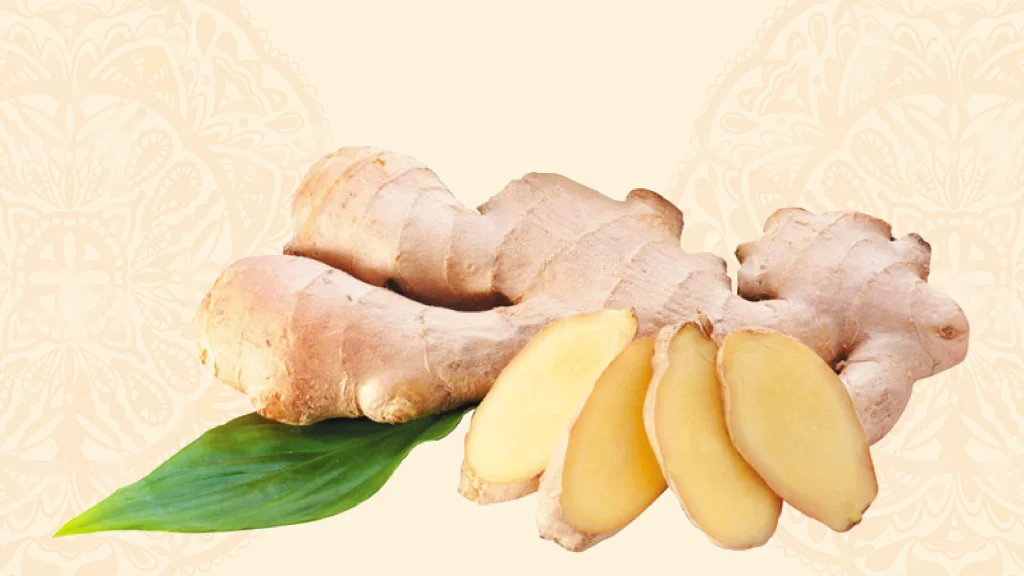
The pungent, aromatic rhizome (underground stem) of the Ginger plant, Zingiber officinale, is used as a spice, flavoring, culinary ingredient, and medicinal. It is a herbaceous perennial plant in the Zingiberaceae family, most likely native to southeast Asia.
Ginger History
The Greek term zingibers, which derives from the Sanskrit word for the spice, Singapore, is the source of the generic name for ginger, Zingiber. Ginger’s historical applications date back to India and China, and by the first century CE, traders had introduced the herb into the Mediterranean region. It was extensively recognized in England by the eleventh century. Soon after the invasion, the Spaniards carried it to Mexico and the West Indies, and by 1547, ginger was being shipped from Santiago to Spain.
Ginger Uses
Usually ground and dried, the spice’s mildly bitter flavor is added to pickles, ginger ale, bread, sauces, and curry foods. Green ginger, the fresh rhizome, is used in cooking. Boiling in syrup is one way to preserve peeled rhizomes. Ginger slices are consumed as a palate cleanser in Japan and other countries in between meals. Medical practitioners use ginger to alleviate colic and gas.
Read More – Is It Possible To Grow Taller?
About 2% of essential oil is found in ginger; zingiberene and zingerone are the spice’s primary constituents and pungent principles, respectively. Rhizomes are used to extract oil, which is then used in the food and fragrance sectors.
Perhaps ineffective for
- Exercising causes muscle discomfort. Taking ginger by mouth does not alleviate or prevent muscle soreness caused by exercise.
- Motion sickness is a common ailment. Ginger taken orally up to 4 hours before travel does not prevent motion sickness.
- There is some curiosity about utilizing ginger for other uses, but there isn’t enough trustworthy information to say whether it will be beneficial.
Adverse Effects
- When administered orally: Ginger is probably safe. It has the potential to induce moderate adverse effects such as heartburn, diarrhea, burping, and general stomach discomfort. Higher doses of 5 grams per day increase the chance of adverse effects.
- When used on the skin: When used in moderation, ginger may be safe. Some people may get skin discomfort as a result of it.
Precautions and Warnings
- Pregnancy: When eaten in foods, ginger is probably safe during pregnancy. It may be safe to use as medicine by mouth during pregnancy. Some specialists advise against using it close to the delivery date because it may raise the chance of bleeding. However, it indicates that it is safe to use for morning sickness without causing harm to the baby. Before using ginger during pregnancy, consult with your doctor.
- Breastfeeding: When taken in foods, ginger is most likely safe for breastfeeding mothers. There isn’t enough credible information to say whether taking bigger amounts of ginger while breast-feeding is safe. To be on the safe side, avoid using.
- Children: Ginger may be safe when eaten orally for up to four days by teenagers near the onset of their period.
- Disorders of bleeding: Taking ginger may raise your risk of bleeding.
- Surgery: Ginger may help with blood clotting during surgery. It may result in more bleeding during and after surgery. Stop using ginger at least two weeks before your procedure.
Physical attributes
Ginger, real, common, or Canton (Zingiber officinale).
Ginger’s leafy stems reach a height of approximately one meter or three feet. The leaves emerge from sheaths enveloping the stem and are elongated, alternating in two vertical rows, ranging in length from 15 to 30 cm (6 to 12 inches). The blooms are comprised of overlapping green bracts, which may have a yellow tinge, and are arranged in dense cone-like spikes measuring 2.5 cm (1 inch) thick and 5 to 8 cm (2 to 3 inches) long. A single little purple and yellow-green blossom is enclosed by each bract.
Harvesting and cultivating
Rootstalk cuttings are planted to propagate ginger, which has been cultivated in this way for so long that it no longer produces seeds.
Rhizomes are harvested by simply pulling them out of the ground, washing them, and drying them in the sun. The dried ginger rhizomes are palmate, branching, or asymmetrical in shape. They range in color from pale buff to light brown to dark yellow. Ginger can be partially scraped, scraped, or peeled (removing the cork, epidermis, and hypodermis), or unscraped (keeping the entire cork layer on).
Benefits
- Combats Germs
Fresh ginger has certain chemical elements that help your body fight against infections. They may also prevent viruses like RSV from proliferating. They are particularly effective at suppressing the growth of bacteria like E. Coli and Shigella.
- Maintains Dental Health
The antimicrobial properties of ginger may help make your smile more radiant. Gingerols, which are active ingredients in ginger, inhibit the growth of oral bacteria. These are the same bacteria that can lead to a dangerous gum infection called periodontal disease.
- Peaceful emesis
The proverbial “old wives’ tale” may hold: ginger relieves upset stomachs, especially during pregnancy. It might function by dissolving and eliminating accumulated gas in your intestines. Additionally, it might ease chemotherapy-induced nausea or seasickness.
- Muscle Pain Relief
Ginger will not relieve muscle pain immediately, but it may help to reduce discomfort over time. In other trials, persons who took ginger for muscular pains after exercise reported less discomfort the next day than those who did not.
- Arthritis Pain Relief
Ginger has anti-inflammatory properties, which means it lowers swelling. This could be especially beneficial in treating rheumatoid arthritis and osteoarthritis symptoms. You may relieve pain and swelling by ingesting ginger or applying a ginger compress or patch to your skin.
- Cancer Growth is Reduced
According to certain research, bioactive compounds in ginger may prevent the progression of some malignancies such as colorectal, stomach, ovarian, liver, skin, breast, and prostate cancer. However, much more research is required.
- Reduces Blood Sugar
According to one tiny study, ginger may help your body use insulin more effectively. More research is needed to determine whether ginger can improve blood sugar levels.
- Period Pain Relief
Do you have menstruation cramps? Ginger powder may be beneficial. those who took 1,500 mg of ginger powder once a day for three days throughout their cycle experienced less pain than those who did not.
- Reduces Cholesterol
A daily dosage of ginger may aid in the reduction of “bad” or LDL cholesterol levels. A recent study found that consuming 5 grams of ginger daily for three months reduced people’s LDL cholesterol by an average of 30 points.
- Defends against disease
Ginger is high in antioxidants, which protect your body’s DNA from stress and harm. They may assist your body in combating chronic ailments such as high blood pressure, heart disease, and lung disorders, as well as promote healthy aging.
- Indigestion Relief
If you suffer from chronic indigestion, commonly known as dyspepsia, ginger may provide some relief. Ginger before meals may cause your system to empty quickly, giving food less time to sit and cause difficulties.
Read More – Turmeric Benefits



